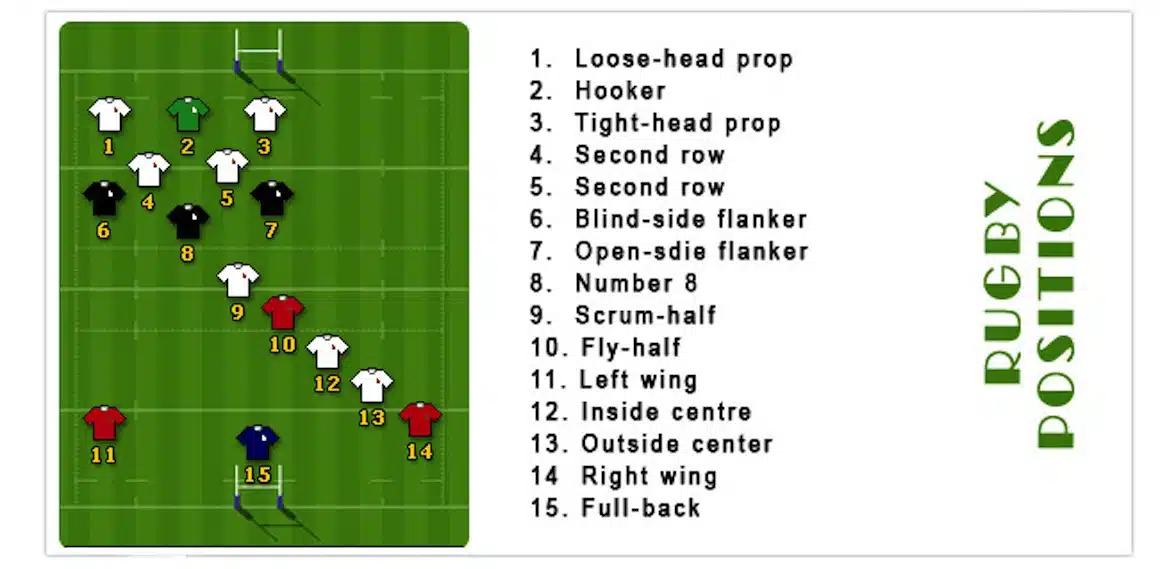In the intricate tapestry of rugby, the Number 9 jersey worn by the scrumhalf remains one of the most pivotal. Often celebrated as the engine of the team, the scrumhalf doesn’t just facilitate the flow between the forwards and the backs; they are the heartbeat of tactical creativity and brisk execution under pressure. Whether orchestrating critical phases, adapting to high-stakes moments, or making split-second strategic decisions, today’s scrumhalf exemplifies a rare blend of vision, speed, and leadership. This article delves into the evolving playmaker’s role, dissecting distribution skills, decision making, and the nuanced demands game management now places on modern halfbacks.
Number 9 Scrumhalf: Central Role in Rugby’s Attack and Defence
The scrumhalf possesses a unique placement right behind the scrum’s front line, allowing visibility over the chaos and the opportunity to shape every phase. In essence, they’re the catalyst that transitions the heavy work of the pack into attacking threats for the backs. Great halfbacks—like those making headlines in recent Super Rugby moves or earning recalls in Irish line-ups—stand out for their blend of speed, sharp decision making, and unflinching leadership when momentum swings hang in the balance.
- Distribution: Quick, accurate passes feed the backline or set up forward runners right on the gain line.
- Game Management: Reading the flow, choosing when to kick, pass, or dart, and dictating pace.
- Defensive Alertness: Tackling around fringes, closing gaps, and supporting rucks.
- Setting Tactical Kicks: Box kicks, grubbers, and probing touch finders, often under immense pressure.
| Core Skill | Description | Game Phase Impacted |
|---|---|---|
| Speed | Enables covering ground, quick delivery under pressure, and reacting to turnovers. | All open play transitions |
| Passing | Accurate, rapid hands create time for playmakers in the backline. | First phase, broken play, set piece restarts |
| Decision Making | Choosing the best option at the base: pass, kick, or sniping run. | Each attacking phase |
| Tactical Awareness | Reading defensive patterns; guiding forwards and kicking to relieve pressure. | Defence and attack coordination |
The scrumhalf’s choices often define whether a side can turn ruck possession into points—or falter against aggressive defences.
[embedded content]
Dynamic Decision Making: The Playmaker In Action
Few positions demand real-time analysis like the scrumhalf. Within fractions of a second, the Number 9 weighs tactical implications: Should the ball go wide to the fly-half, sniped short down the blind? Should a box kick relieve pressure, or is a darting run through a fractured defensive line on offer?
- Pinpoint passes keep defenses guessing and maximize attacking options.
- Box kicks—if perfectly placed—allow wings to contest or reclaim possession high upfield.
- Close support runs enable support for forwards breaking into space after turnovers.
| Scenario | Common Scrumhalf Decision | Potential Outcome |
|---|---|---|
| Opposition defense tight, slow ruck ball | Box kick for territory/chase | Regain possession or pin opponents deep |
| Fast clean ball at the ruck base | Quick pass to fly-half | Unleash backline attack |
| Defensive lapse near the fringes | Sniping run | Break the gainline or score |
Those who thrive in Number 9 embrace the scrutiny—see the latest signings at London Irish or Northampton Saints, where the search for high-IQ, adaptable halfbacks never ceases.
Scrumhalf’s Responsibilities at the Breakdown and Set Piece
During set pieces, the scrumhalf’s duties differ sharply from those of forwards. At the scrum, they’re not inside the scrum itself but orchestrate play as the vital distributor. Scrumhalves feed the ball into the scrum and recover it swiftly once the pack secures possession—often under pressure from charging flankers or an advancing defensive line. Their feeding technique, timing, and composure directly influence the scrum’s utility and the platform it provides for either attack or territory gain.
- Scrum Feed: Ensures quick, accurate ball placement with minimal infringement risk.
- Recovery and Distribution: Picks the ball at the base, reads the defence, and executes rapid decisions.
- Cover Defence: Tracks opposition snipes and supports their own forwards if the scrum falters.
- Game Management: Adapts plan if pack struggles—e.g., accelerates clearance or switches attack direction.
| Set Piece | Scrumhalf’s Duty | Critical Skill Required |
|---|---|---|
| Scrum | Ball feed, base recovery, transition attack | Calm under pressure, fast pass, vision |
| Ruck | Clear, secure possession, relay to backs | Speed, anticipation, tactical awareness |
| Maul | Wait for legal ball release, then distribute | Timing, strength, game sense |
Case in point: tournament drama as seen when Ireland faced a scrumhalf crisis during the Six Nations, highlighting how irreplaceable a skilled Number 9 is.
[embedded content]
Game Management and Modern Tactical Demands
Today’s halfback has evolved—no longer just a passer, but the on-field general allied with the fly-half. Their responsibility stretches to managing the team’s rhythm, exploiting tactical gaps, and keeping opposition guessing through tempo changes and unpredictable attacking shapes.
- Organizing forwards after contact; barking positional orders.
- Assisting in backline organization alongside the fly-half, especially during broken play.
- Monitoring the referee’s signals for quick tap penalties or advantage usage.
- Partnering with other playmakers, as seen in recent stints at fly-half, such as O’Connor’s creative deployments, or the unexpected All Blacks tactical switch at Rugby World Cup.
| Tactical Aspect | Scrumhalf’s Contribution | Visible Team Outcome |
|---|---|---|
| Territory Control | Well-placed kicks, directional play | Relieves pressure, pins opponents deep |
| Attacking Initiative | Fast tempo, varied attack starts | Mismatches, line breaks |
| Defensive Cover | Tracks breaks, marshals defensive line | Limits counter attacks |
The scrumhalf’s direction often determines whether opportunities are seized or missed—one reason why top-level teams, such as those highlighted in South Africa’s faith in halfback and centre versatility, prioritize depth and tactical versatility in this role.
Training, Evolution, and Iconic Number 9s
Behind every famed scrumhalf lies years of high-intensity training focused around core competencies and mental adaptability. As the physical and tactical demands increase, clubs across Premiership Rugby and Super Rugby invest heavily in nurturing future halfback generals—tracked even by news and transfer speculation, such as Exeter’s move for former Scotland scrum-half.
- Position-specific drills: refining pass speed, peripheral vision, and ruck entry mechanics
- Scenario-based learning: responding to unpredictable defensive patterns or set piece failures
- Mental resilience: preparing for high-stakes, high-pressure moments with poise
- Multi-phase play simulation: linking with fly-half and adapting in real-match tempo surges
| Legendary Number 9 | Key Attribute | Impact |
|---|---|---|
| Antoine Dupont | Distribution, vision | Turns rucks into lightning-fast attacks |
| Aaron Smith | Box kicking, speed | Controls territory and tempo expertly |
| Faf de Klerk | Defensive energy, tactical kicks | Breaks opposition rhythm, inspires team |
This new breed of scrumhalf—well-prepared for fiercely competitive 2025 seasons—epitomizes rugby’s adaptability and constant evolution, making the Number 9 not just a cog, but the pivot on which the modern attack swings.
FAQ: Scrumhalf Role and Responsibilities in Rugby
-
What is the primary role of a scrumhalf in modern rugby?
The scrumhalf acts as the main distributor between forwards and backs, dictating play tempo, making crucial passes, and managing game phases via accurate execution and quick decision making.
-
What skills distinguish great Number 9s from average ones?
Exceptional speed, consistent tactical awareness, leadership under pressure, and the ability to deliver accurate passes make top halfbacks invaluable.
-
How does the scrumhalf contribute defensively?
Scrumhalves are responsible for tackling around rucks, covering defensive blind spots, and often acting as the first line of defence when the opposition makes a break.
-
Why is passing ability so critical for a scrumhalf?
Fast and precise passing from the base of set pieces and open play can unlock defenses, support playmakers like the fly-half, and maintain the team’s attacking momentum.
-
How has the role of scrumhalf evolved by 2025?
Modern Number 9s are now integral to tactical kicking, game management, and even playmaking decisions—requiring a broader toolbox than ever, as illustrated by current stars and high-profile transfers around the globe.








